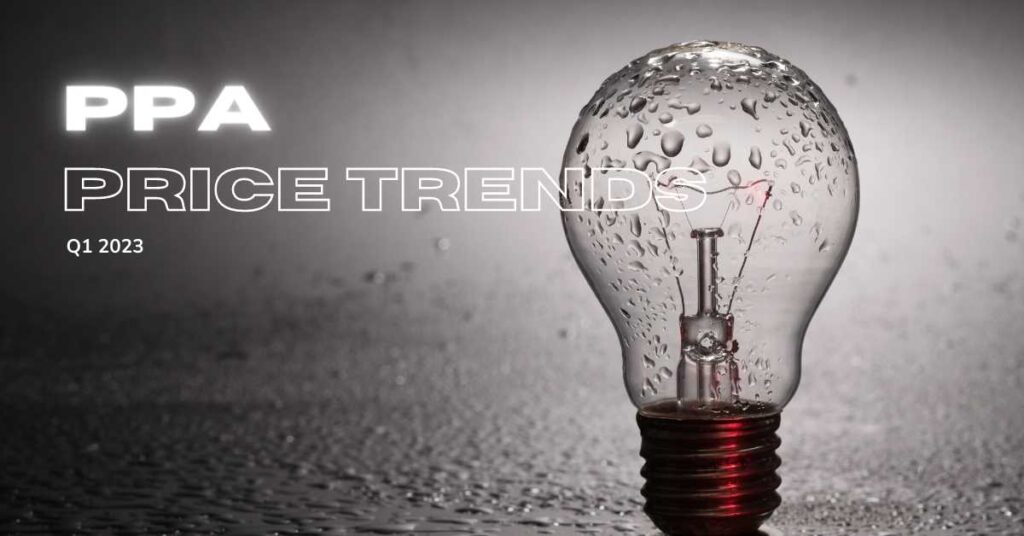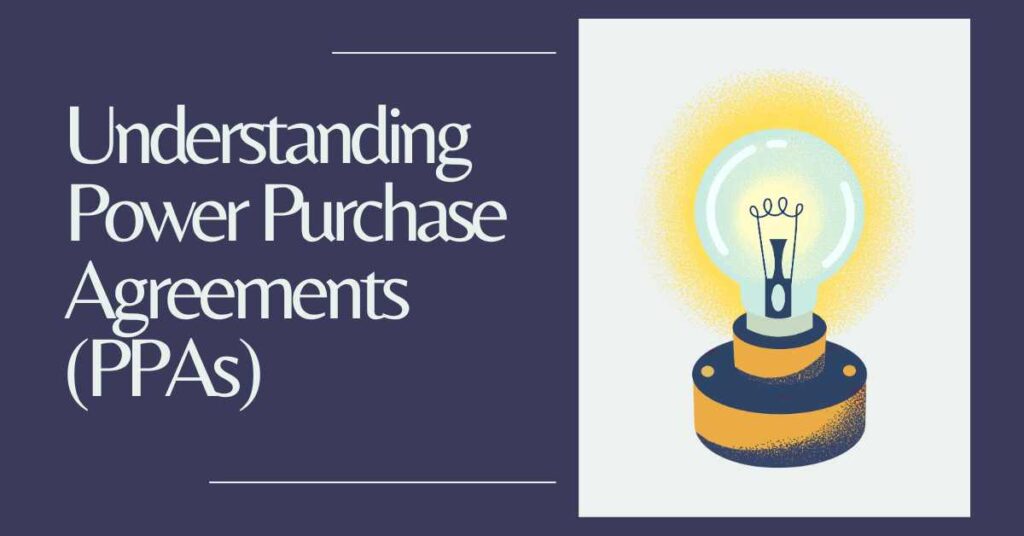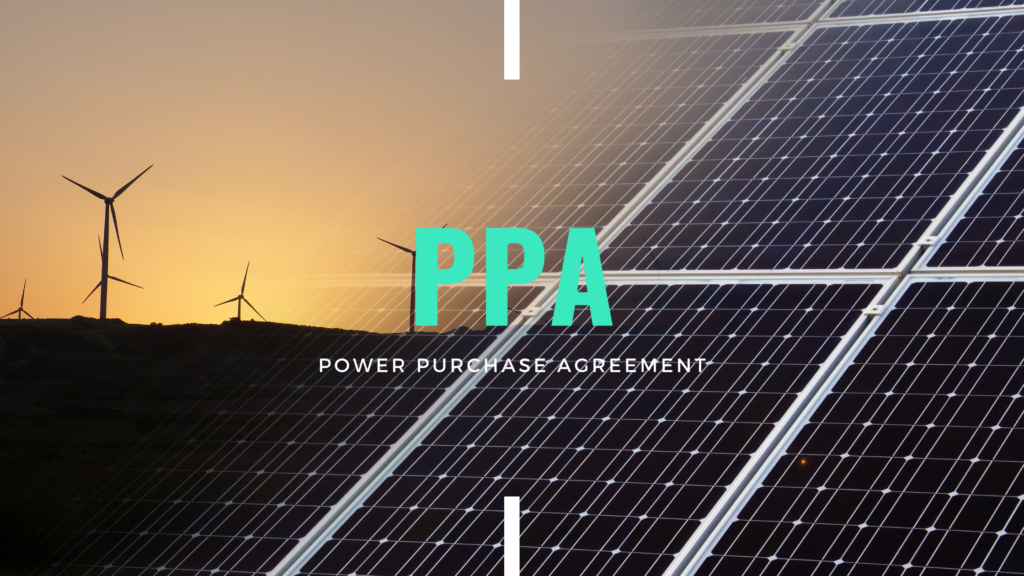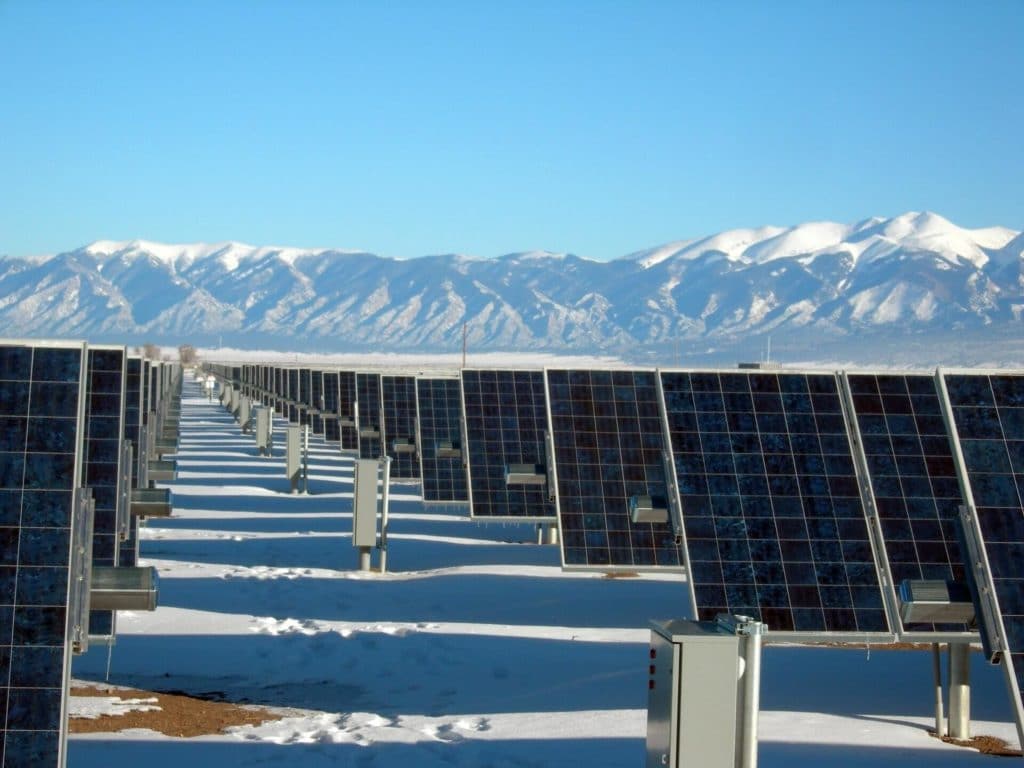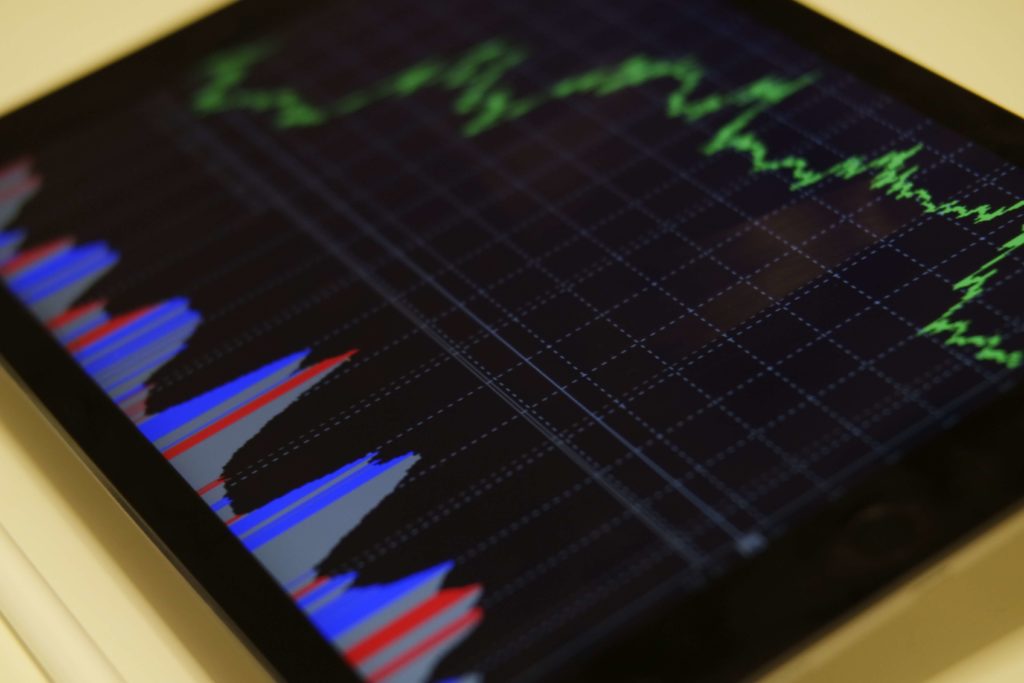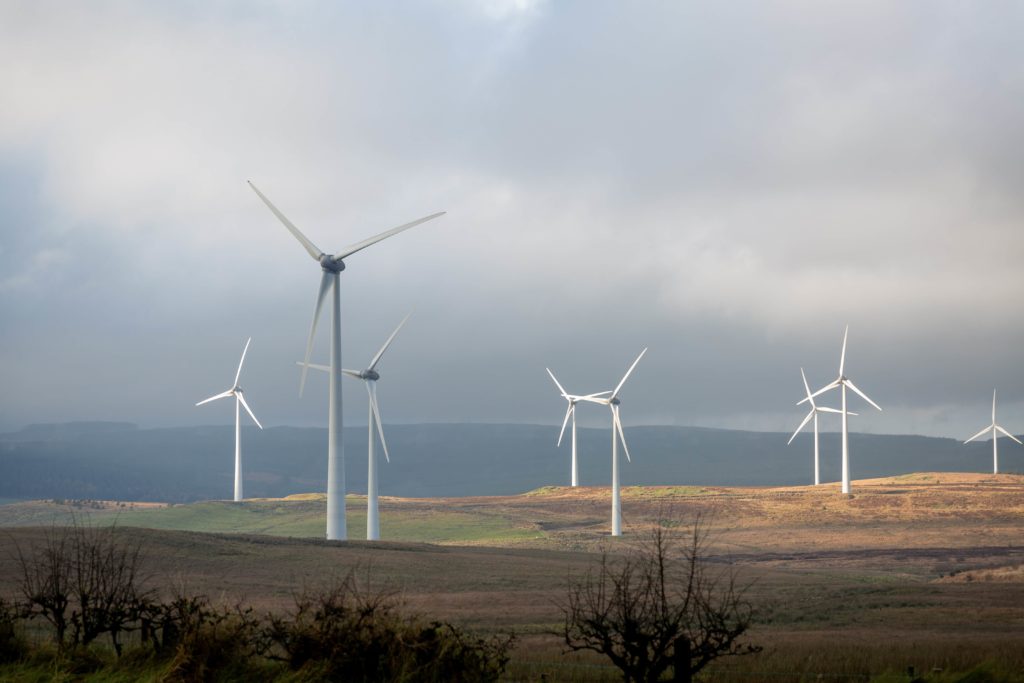Table of Contents
PPA Price Trends in Q1 2023. Introduction
As we kick off the first quarter of 2023, there are plenty of trends to keep an eye on in the PPA (Power Purchase Agreement) renewable energy market. From the rise of renewable energy sources to changing government policies. Let’s discover what’s shaping the renewable energy landscape and what opportunities and challenges lie ahead.
PPA market activity decreased vs the H2 2022. However, the interest among corporate buyers remains rather stable as PPA continues to be used as a long-term hedge against volatile energy market prices. Instead of producing energy via a conventional utility electricity supply agreement, the high energy costs can be spread across a longer period of up to 10 years+ that PPA contracts can offer.
It is worth mentioning, however, that the market power forward curve, specifically for the front years, declined in Q1 2023, while the decline in PPA prices was not as prominent as for conventional energy sources. Considering this market price correction, finding an attractive PPA offer offering significant cost benefits becomes very difficult compared to a non-PPA approach.
The Evolution of European Cal24 Forward Contracts, Nov’22 – Mar’23

What is the most attractive PPA market in Europe in Q1 2023?
Renewable energy has become increasingly important in Europe, and Power Purchase Agreements (PPAs) are an important factor in the growth of the renewable energy market. The demand for renewable energy in Europe continues to be high despite the energy market price decline in the beginning of this year.
Understanding the current PPA price levels in Q1 2023 is crucial for companies looking to invest in renewable energy. We are going to break down the PPA price levels in Europe and will provide insights and recommendations for companies looking to navigate the complex landscape of PPA pricing in Q1 2023. Whether you are a renewable energy developer, a corporate energy buyer, or a policy maker, this article will provide valuable information on the latest developments in PPA price levels in Europe.

Corporate PPA activity remains one of the highest in Spain. This is because of the renewable potential of Spain, particularly in wind and solar power. The country’s favorable weather conditions and geography make it an ideal location for the development of large-scale renewable energy projects. Secondly, the cost of developing renewable energy in Spain is one of the lowest in Europe because of cheaper land acquisition and labour costs than in other European markets. As a result, Spain has a mature and competitive CPPA market, with a number of established developers and buyers in the market. This has led to greater transparency and standardization in contract terms, making it easier for businesses to enter into CPPAs.
PPA “pay-as-produced” price indication as of March 2023
The table below indicates an indicative 10-year PPA price overview for newly built Solar/Wind renewable assets as of Q1 2023. You can check the PexaPark PPA average index here.
| Q2 2022 | Q3 2022 | Q4 2022 | Q1 2023 | |
| Market | 10y “pay-as-produced” PPA, EUR/MWh | 10y “pay-as-produced” PPA, EUR/MWh | 10y “pay-as-produced” PPA, EUR/MWh | 10y “pay-as-produced” PPA, EUR/MWh |
| France | 95 | 130 | 90 | 70 |
| UK | 100 | 100 | 100 | 85 |
| Germany | 85 | 100 | 90 | 80 |
| Italy | 80 | 90 | 85 | 75 |
| Netherland | 80 | 85 | 70 | 65 |
| Poland | 140 | 150 | 90 | 55 |
| Portugal | 44 | 45 | 50 | 45 |
| Spain | 44 | 45 | 48 | 45 |
The PPA prices in the table above represent average 10-year PPA deals for newly built assets across different technologies, such as Solar and Wind. PPA prices can vary depending on a number of factors, such as the type of renewable energy being generated (e.g., solar or wind), the location of the project, and the term of the agreement. You can learn more about the most popular PPA Head-of-Terms condition in the article here.
What are the most notable PPA Market Trends?
- The increase in shaping and balancing costs. The shaping and balancing costs refer to the additional costs incurred by electricity suppliers to match the supply of renewable energy to the demand of their customers. These costs are incurred to ensure a reliable and stable electricity supply, despite the intermittent nature of renewable energy sources such as wind and solar power. Before the war in Ukraine, the PPA shaping and balancing costs in Europe were around 5 to 10 EUR/MWh. As the market price and volatility increased, the shaping and balancing skyrocketed to 20 – 30 EUR/MWh, depending on location and technology.
- PaP (Pay-as-Produced) PPA price structure became the main offer. In PaP PPA price structure price of electricity is variable and can fluctuate based on the amount of electricity produced by the renewable energy source, as well as market conditions. While in the BL (Baseload) PPA price structure, a buyer pays a pre-determined price for a consistent amount of electricity over time. Therefore, a Baseload PPA provides greater price stability and a lower risk for the buyer than a PaP PPA price structure. However, due to the increase in the market price volatility and unpredictability, sellers are not offering the baseload price structure. High prices, cannibalization and unforeseen deviations from production forecasts created the perfect storm for PPA producers.
- Increased Counterparty Risk. PPA counter-party risk refers to the risk that the other party involved in the agreement will not fulfil their contractual obligations, such as payment for electricity or delivery of electricity from a renewable energy project. The double-digit inflation and tightening of the monetary policies by the world’s central banks fueled the fears of economic recession and decline in economic activity. As a result, sellers are increasingly demanding more stringent liability CAPs and bank guarantees. However, the EU Commission is currently discussing the possibility of providing state-supported guarantees for businesses. If this goes through, this will be a game-changer for the corporate PPA market, especially for small and medium-size businesses.
- The shortening of PPA contract tenure. Historically, a typical PPA contract was between 10 to 15 years. However, with the increased market price level following the war outbreak in Ukraine, merchant appetite for PPAs from investors and lenders increased. Therefore, moving forward, it is expected that shorter-term PPAs 5 to 10 years can become a norm.
- Delayed PPA COD date. This date refers to the Commercial Operation Date, which is the date on which a renewable energy project is deemed to be operational and begins supplying electricity to the grid. In 2022, there has been a trend towards prolongation of COD timelines for new-built renewable energy projects. If previously it was possible to find a project with a COD commencing in the same or next calendar years, today buyers would need to wait often 2 years or more to have PPA energy supplied. This has been driven by a competitive market landscape, delays in construction and supply chain disruptions and the shift towards the merchant and CfD government markets.
- Inflation-linked PPA pricing. Inflation-indexed PPA pricing takes into account the expected inflation rate over the term of the contract. This fixed PPA price is then adjusted annually based on a CPI index agreed. There can be inflation-capped or uncapped PPA agreements. Historically, this structure was more common in the UK market, but it was gaining interest in other markets in the EU.
- Regulatory uncertainty risks are passed onto the consumers. Following the energy price shock of 2022, the market participants experienced a wave of regulatory interventions which spread fears among investors. In October 2021, Spain took the lead by introducing the terms “windfall tax” and “revenue cap” into our daily lexicon, which shocked the renewable energy community. In 2022, more and more European countries began to adopt this trend. This set a new president for PPA contract negotiations where now sellers want to pass all future regulatory and market design uncertainties onto a PPA off-taker. The lack of clear regulations has caused delays in power purchase agreements (PPAs) negotiations and necessitated adjustments to the contract terms. The “change in law” became one of the hot topics in 2022, and this trend is likely to continue into 2023, especially as the EU is debating on the energy market design changes. Some examples may include:
- Establishing of a separate market for renewable energy only;
- The removal of the merit order effect;
- The adoption of governmental Contracts for Difference (CfDs) auctions as the sole mechanism for deploying new renewable energy sources.
- The bundling of Renewable Energy with Flexibility Energy Storage solutions. The bundling of renewable energy with flexible energy storage solutions, such as batteries, has become an increasingly popular trend in the energy market. And we believe that this trend will only intensify in the coming years, especially as there will always be a need for baseload PPA pricing among corporate buyers. This not only improves the reliability and predictability of renewable energy but also enhances grid stability, reduces the need for additional grid infrastructure, and lowers the overall cost of energy storage. As an interim solution, however, before the energy storage solutions really pick up, we will see more interest in mixing Solar PV with Onshore and/or Offshore renewable technologies to lower the shaping and balancing costs.
Do you wish to learn more about the potential risks of Power Purchase Agreement (PPA) contracts? And want to know how to address them during PPA contract negotiations? Then read this next article about PPA Contract Risks & How To Address Them.
What are the proposed measures to accelerate the roll-out of PPA agreements?
- Government-backed credit guarantees to facilitate access of SMEs to PPAs;
- Obligations for suppliers and/or large final consumers to hedge a part of their portfolio with PPAs;
- Pooling demand;
- Standardisation of contract terms;
- Transmission capacity rights to facilitate cross-border PPAs.
Key PPA Market Chart of 2022
According to Pexapark European PPA market research, the amount of disclosed corporate PPA deals in 2022 reached 7.06 GW. They don’t provide PPA volume in GWh, but we can estimate this value based on the average renewable energy generation yield to be around 12.000 GWh/year. This is about 93 GWh per PPA deal. This means that the main buyers of PPA energy are typically larger corporations than small and medium size businesses.

Small and medium-sized businesses in Europe still face challenges in accessing this type of energy procurement. There are several reasons for this:
- High Transaction Costs. PPA agreements can be complex and time-consuming to negotiate.
- Creditworthiness. Large electricity generators may require potential buyers to have a certain level of creditworthiness in order to enter into a PPA agreement.
- Energy consumption intensity. A typical offsite Solar PV, Onshore Wind PPA minimum yearly consumption volume requirement is 30GWh+. SME often don’t consume such a big volume of energy annually.
- Lack of Information. Small and medium-sized businesses may not be aware of the benefits of PPA agreements or may not have access to the necessary information to negotiate these agreements effectively. Such benefits might often include:
- Price Stability & Price Risk Mitigation
- Energy Cost Savings
- Environmental Claim Benefits
- Energy Security & Supply Chain Diversification
- Brand and Reputation
Although PPA agreements can provide a range of benefits for corporate buyers looking to procure renewable energy, it is very likely that many companies who signed their PPAs in 2022 were mainly pursuing energy cost savings objectives in the volatile and high-pricing energy market environment. Since the power prices are expected to remain high for a longer period, we shall expect more and more companies are signing their first PPA agreements in 2023.




According to Pexapark, utilities and trading houses keep a close eye on volatility as it plays a critical role in evaluating and mitigating financial risk. Normally, front-year contracts exhibit annualized volatilities ranging between 15-35% for long periods, indicating an acceptable risk level. In 2022, the power market price volatility reached above 200%, which fueled a lot of panics among the market participants.
European day-ahead power prices, Jan- Dec 2022

European day-ahead power prices saw unprecedented volatility price levels in 2022. However, the Iberian power market was disconnected from the rest of Europe due to the gas market price introduction and lower reliance on Russian gas.


Final Words
In conclusion, the renewable energy sector is poised for continued growth in the coming years, driven by decreasing costs, advances in technology, and evolving regulatory frameworks. The power purchase agreement (PPA) market is a critical driver of this growth, enabling companies to secure reliable and cost-effective renewable energy supplies. As the PPA market expands and matures, we can expect to see continued innovation and experimentation, with new models and structures emerging to meet the evolving needs of businesses and suppliers.
With the continued development of renewable energy and the PPA market, we are on a path towards a more sustainable, resilient, and carbon-free energy system for the future.
I hope this article provided more insights into Q1 2023 PPA Energy Market Trends and showcased the latest market developments. If you found this article informative, please share it with your colleagues and peers. Don’t forget to subscribe to our newsletter to receive future updates directly in your inbox!
Finally, if you need support negotiating a corporate PPA agreement and want to ensure that you are employing the best market practices, feel free to reach out to FutureEnergyGo experts via the contact form on our website. Our team of energy market experts is always here to help.
Curious to learn more about PPAs? Our guide offers a concise roadmap to navigate Power Purchase Agreements (PPAs). Learn more here.


